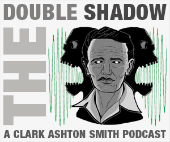The Druid and the Elk (Pt. 1)
This post is in the Eldritch Icons project which will weave a narrative to supplant the 13 Icons of the Dragon Empire with more sinister icons born of Weird Fiction.
Elk Over Druid
Those who saw it happen, the Rangers and others who chose not to take sides, said the battle ended almost before it had begun. Druids, secure in their bond with the forests surrounding their Iconic mistress raised their staffs and called on the power of the land—but that power did not come. The blades of the fanatical priests cut them down and the forest was silent.
She followed in the wake of her envoys, the shimmering elk-goddess with blood-encrusted antlers. She soaked in the power of the Wild Wood. Druids and rangers felt their arts fizzle out in her wake. And yet she promised to restore all those who gave her love and devotion. In past Ages, challengers had taken the power of the High Druid before. Would it be so wrong to kneel before her?
While the Elf Queen deserts her Queen's Wood, leaving it to the Black Goat of the Woods, a very different battle starts in the Blood Wood along the Iron Sea and moves inland to the High Druid's own Wild Wood. Yhoundeh, the elk-goddess challenger, does not raise finger or hoof to fight. She glides in the wake of her priests, whose magic combines druidic power with forbidden blood magic.
Something about the elk-goddess's presence overpowers the natural tie Druids and Rangers feel with the woods. If her priests fail to erect and guard shrines, that power fades as she moves on. But wherever they establish her presence, only her followers may call on the power of the Earth. If, once her priests are installed, order returns and Druids may go about their business with only a different name to call on, how many will simply switch loyalties? Some darker Druids might even welcome the opportunity of learning from her priests.
Then, there will be the hardcore partisans. Some are half-elves like the High Druid. They cling to her as their last point of stability in a chaotic world where their Queen has abandoned them. Others may have strong relationships with her or owe her favors. Perhaps some were influential to her own power grab.
The High Druid may counteract the negating force of the elk-goddess. Is it only in her presence? In designated sites of power? Does she need the players’ help to conduct a rite or spell to expand that force? Ultimately, the elk-goddess and the High Druid's fight comes down to their connections to Nature and how they draw on its power.
The Elk-Goddess Yhoundeh
Yhoundeh, the Hyperborean elk-goddess is a mysterious figure in the writings of Clark Ashton Smith. Is she elk? Is she woman? Is she some other creature or some kind of hybrid being? From Smith, we know one thing about her worship—her temples are dominated by priests of great inquisitorial spirit:
They were disappointed because the formidable writ of arrest, with symbolic flame-etched runes on a scroll of human skin, was now useless and because there seemed to be no early prospect of trying out the ingenious agonies, the intricately harrowing ordeals which they had devised for Eibon with such care.
While priests who take the trouble to make writs of arrest in flame-etched runes on scrolls of human skin certainly add color as adversaries for your players, the goddess herself is so completely absent from the texts that a GM could describe her as a misunderstood being of natural power. Is she close enough to human to understand what her priests do? Is she so far above human that she doesn't care? Is she more interested in love than hate? What is life like for people who turn their loyalty to her, who they see as a new High Druid?
Another factor in shaping Yhoundeh is her marriage. Will Murray quotes from a Clark Ashton Smith letter which, sadly, I can't confirm as it's not in my collection:
As to the marriage of Y'houndeh and the flute-player Nyarlathotep, I am inclined to suspect that something of the sort is hinted at or adumbrated by Pnom. I quote the reference: ‘Houndeh in the 3rd cycle of her divinity was covered by that spawn which pipes perennially the dire music of chaos and corruption.’ If this doesn't refer to the Azathothian flute-player, I'll undertake to drink a straight gallon of the next segur-whisky that is imported from Mars.
(Smith's letters are a glorious exercise in collaborative fiction creation, rather like fandom beliefs (such as Jon Snow's parentage) spawning on modern forums or tumblr truths.)
With the assistance of the Crawling Chaos (who we will see later in conflict with the Prince of Shadows), what devious schemes might Yhoundeh undertake? How many might simply be undertaken on her behalf?
In part 2, I'll give some plot hooks and priest/ally stat suggestions.


